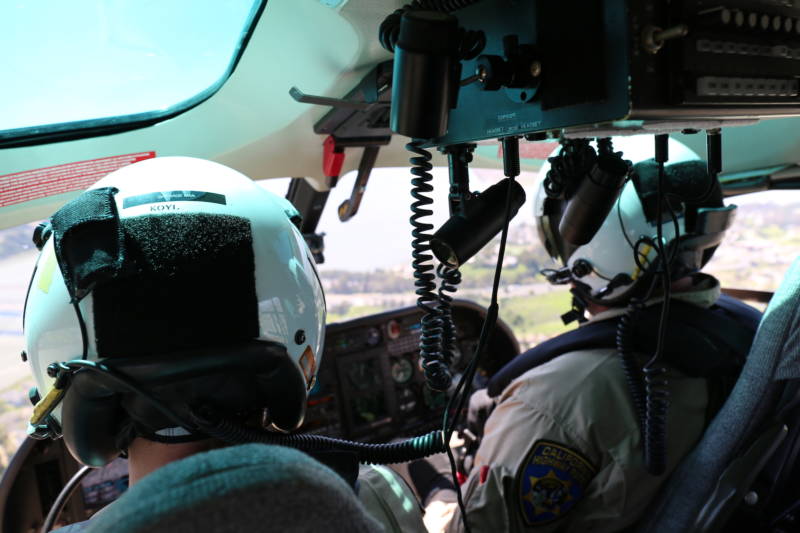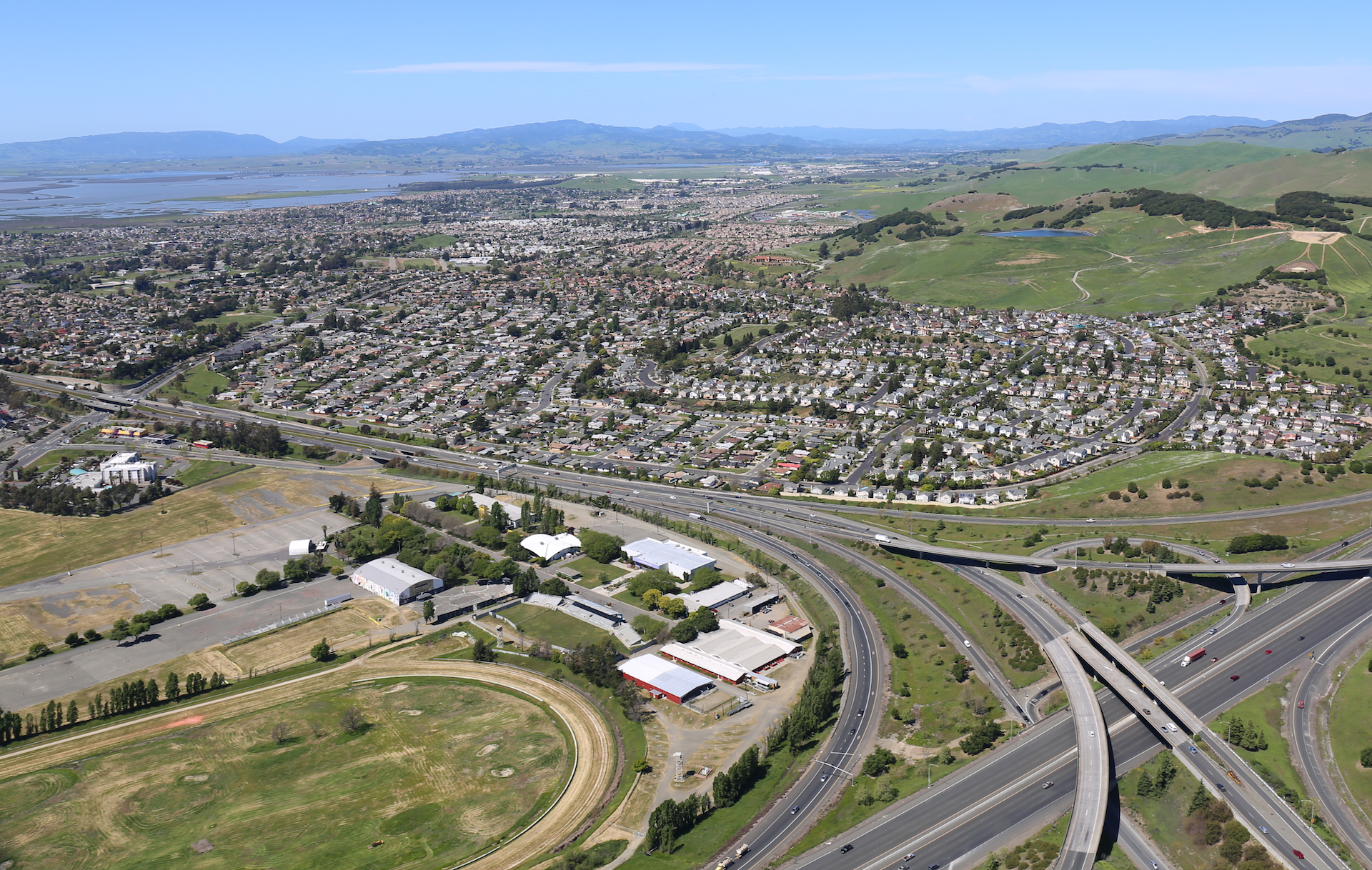Or, he speculated, are the signs simply an exaggeration meant to deter speeding motorists -- without any real aircraft on patrol?
Jim Andrews says those signs are definitely real. And he should know. He's been a California Highway Patrol pilot for decades.
"We don't necessarily set up as many specific speed enforcement details as we did 10 or 15 years ago, predominantly because of the advent of Lidar," said Andrews. (Lidar lets officers use lasers to pinpoint the speed of a vehicle.) "But there are still circumstances where we are definitely valuable, where traditional ground enforcement may not work."
It's easier from above, for example, to see drag racing or drivers crossing the double yellow.
Patrolling from Above
To find out how it all works, I climbed into one of the two helicopters that serve the CHP Golden Gate Division, which oversees all nine Bay Area counties. The air enforcement office also has two small airplanes at its headquarters at Napa County Airport -- but that's it for the fleet.

Each aircraft has a pilot and paramedic on board, both CHP officers. That makes for cramped quarters in the back, where I stuff myself in between emergency equipment: oxygen tanks, a stretcher and medical supplies.
But as soon as we're flying over I-580, it's easy to see that Andrews is right. From up high, you can quickly get the lay of the land and spot speeding cars.
You can also get nauseous really quickly.
While we fly, radio calls come in from different voices and agencies. I can’t decipher them all, but Andrews points out a red car that officers have identified over the radio.
"It's very easy to see. It stands out when someone's going considerably faster," he said. Pilots once used binoculars to spot the cars, but now the aircraft are equipped with high-definition cameras. Despite the technology, they still rely first and foremost on their eyes.
After spotting a suspected speeder, Andrews has to confirm that the car is, in fact, speeding. It’s not a high-tech process. He simply flies low above the car at either the same speed or slower.
On most freeways in the state, Caltrans has measured and painted perpendicular white lines every mile on the side of the road. You can see them from the helicopter window, or if you look closely when you drive by. Those are used to calculate speed.
Andrews starts his stopwatch when he flies over one and stops it when he hits the next. He knows the helicopter's ground speed. And, since he's flying the same speed or slower than the car below, he can tell if the car is speeding.

The officers in the air don't actually land and issue tickets. That might cause a traffic accident. Instead, they radio down to another officer in a more ground-friendly vehicle, who then pulls over the offender. Typically, that officer is waiting and ready to go at a predetermined location. Both officers' names are on the ticket and both must appear in court.
CHP press officer Daniel Hill said they once ticketed a motorcyclist who was caught racing through the streets. He got all the way home and was then surprised when an officer knocked on his door 20 minutes later. Helicopters had been watching him from the air and captured him on camera.
But How Common Is It ... Really?
The California Highway Patrol used to rely heavily on this system of helicopters and small airplanes to monitor traffic, but these days aircraft enforcement has gone out of style. Budget cuts have rolled back the number of CHP aircraft and their total flying time. The small planes used to go on speed patrol once or twice a day. Now, they simply monitor speed while on general patrol for other things.
"It never was cost-effective for [helicopters] to go out and loiter over a section of freeway," said Andrews.
Speed enforcement by aircraft has become especially rare in the last decade, since radar and Lidar devices made it possible for officers on the ground to catch speeders more efficiently.
Radar, which uses Doppler waves, sends that signal out across all lanes of traffic -- feeding back whatever are the fastest and slowest speeds on the road. But it's the relatively new precision of Lidar, or Light Detection and Ranging, utilizing laser technology, that has truly been a game changer.
from Hacker News https://ift.tt/nN9IlG5
No comments:
Post a Comment
Note: Only a member of this blog may post a comment.